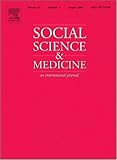|
|
Help |
| Home - Basic G - Gambia Culture Africa (Books) | |
e99 Online Shopping Mall
|
|
Help |
| Home - Basic G - Gambia Culture Africa (Books) | |
| 1-4 of 4 |
click price to see details click image to enlarge click link to go to the store
|
| 1. Ethnic Diversity and Integration in The Gambia: The Land, ThePeople and The Culture by Godfrey Mwakikagile | |
 | Paperback: 278
Pages
(2010-06-08)
list price: US$19.95 -- used & new: US$19.95 (price subject to change: see help) Asin: 9987932223 Canada | United Kingdom | Germany | France | Japan |
|
Editorial Review Product Description | |
| 2. Where techno-science meets poverty: Medical research and the economy of blood in The Gambia, West Africa [An article from: Social Science & Medicine] by J. Fairhead, M. Leach, M. Small | |
 | Digital: 11
Pages
(2006-08-01)
list price: US$7.95 -- used & new: US$7.95 (price subject to change: see help) Asin: B000P6NX2Q Canada | United Kingdom | Germany | France | Japan |
|
Editorial Review Product Description | |
| 3. Our Grandmothers' Drums: A Portrait of Rural African Life & Culture by Mark Hudson | |
 | Paperback: 322
Pages
(1991-04)
list price: US$13.95 -- used & new: US$5.00 (price subject to change: see help) Asin: 0805016201 Average Customer Review: Canada | United Kingdom | Germany | France | Japan |
Customer Reviews (2)
"It was in the early hours of the morning before the dancing began in earnest, the figures of the women glowing as though golden in the light of the hurricane-lamp, as they came running towards the drummers, spinning around only at the last moment to dance. This was what they liked more than anything elese - the extremity of this total bodily exertion, this fervent, almost ecstatic unleashment of energy, in which every muscle, every last atom of their energy would be used. It was as though the rhythms of the drums..[...]... were touching something actually inside the women themselves, to which their frenetic shaking was an involuntary, though wholly pleasurable response. They called it dia - sweetness." "Hear the sound of these drums! Hudson shows that African life can be strange beyond our imagining.The pragmatic and relaxed attitudes towards the body and sexual activity; the separatedness of women and men, who get together pretty much just for sex; the ancient initiation formulas and rites, the pragmatic interpretation of the Muslim religion mixed with animism and, above all, the aliveness of these people get through in this book really well. These Mandingko use their bodies for pleasure in a way which makes Westerners look like hollow emaciated specters lost in our greedy little calculating minds. There is much fun in African lives and much sadness - sadness that we have forgotten about. We need to learn from Africans about how to inhabit our bodies and about how to live in the present moment and this book gives us first hand information on these topics.Highly recommended.
| |
| 4. Gambian Culture: Griot, Talking Drum, Papa Susso, Public Holidays in the Gambia | |
 | Paperback: 24
Pages
(2010-09-15)
list price: US$14.14 -- used & new: US$14.13 (price subject to change: see help) Asin: 1157247296 Canada | United Kingdom | Germany | France | Japan |
|
Editorial Review Product Description | |
| 1-4 of 4 |